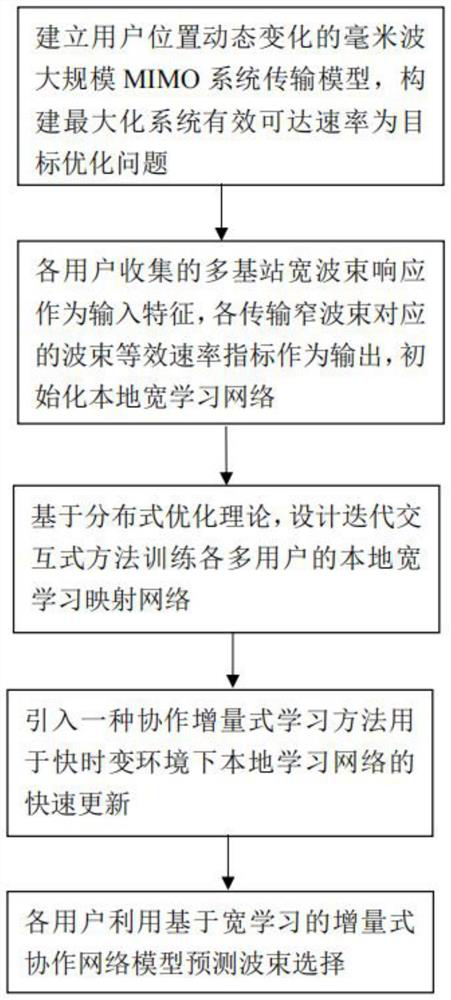Millimeter wave MIMO user increment cooperative beam selection method based on wide learning
A millimeter wave, user technology, applied in advanced technology, climate sustainability, sustainable communication technology, etc., can solve the problems of weak computing power, storage capacity and multi-user interaction ability, to meet the real-time model update, reduce Interaction overhead, effect of satisfying requirements
- Summary
- Abstract
- Description
- Claims
- Application Information
AI Technical Summary
Problems solved by technology
Method used
Image
Examples
Embodiment 1
[0119] see Figure 1-Figure 7 , this embodiment provides a wide-learning-based millimeter-wave MIMO user incremental cooperative beam selection method, and the method flow is as follows figure 1 As shown in the method, the method includes the following steps:
[0120] Step S1, constructing a cooperative transmission millimeter-wave massive MIMO system model under the scenario of dynamic change of user position, and establishing a multi-user beam selection optimization problem model aiming at maximizing system efficiency and rate;
[0121] Specifically, in this embodiment, the step S1 specifically includes:
[0122] In this embodiment, a scene is constructed by using an open source Deep MIMO dataset and specific channel data is generated. The channel data of the dataset is simulated by the ray tracing simulation software Wireless InSite according to the environment parameters of the scene. The simulator can simulate hundreds of rays sent from the transmitting end, and generat...
PUM
 Login to View More
Login to View More Abstract
Description
Claims
Application Information
 Login to View More
Login to View More - R&D
- Intellectual Property
- Life Sciences
- Materials
- Tech Scout
- Unparalleled Data Quality
- Higher Quality Content
- 60% Fewer Hallucinations
Browse by: Latest US Patents, China's latest patents, Technical Efficacy Thesaurus, Application Domain, Technology Topic, Popular Technical Reports.
© 2025 PatSnap. All rights reserved.Legal|Privacy policy|Modern Slavery Act Transparency Statement|Sitemap|About US| Contact US: help@patsnap.com



